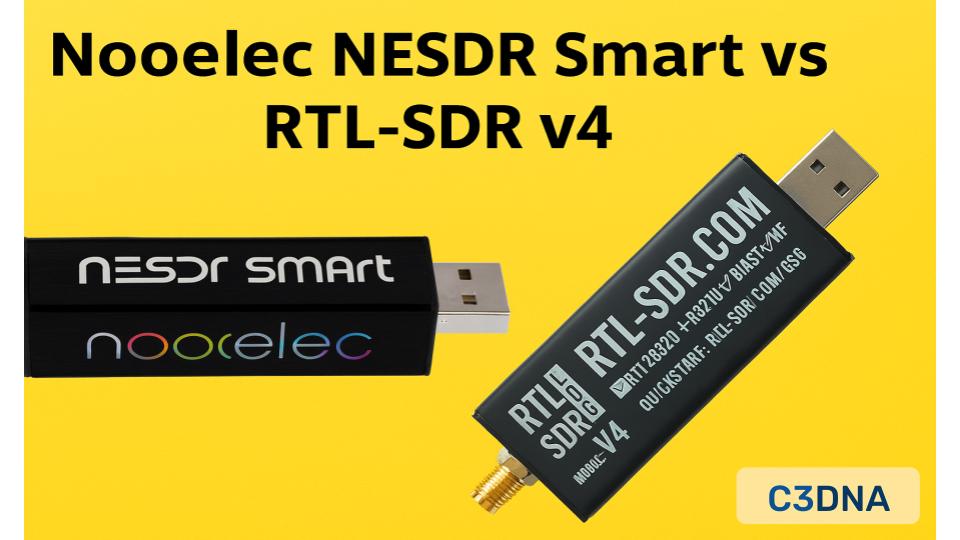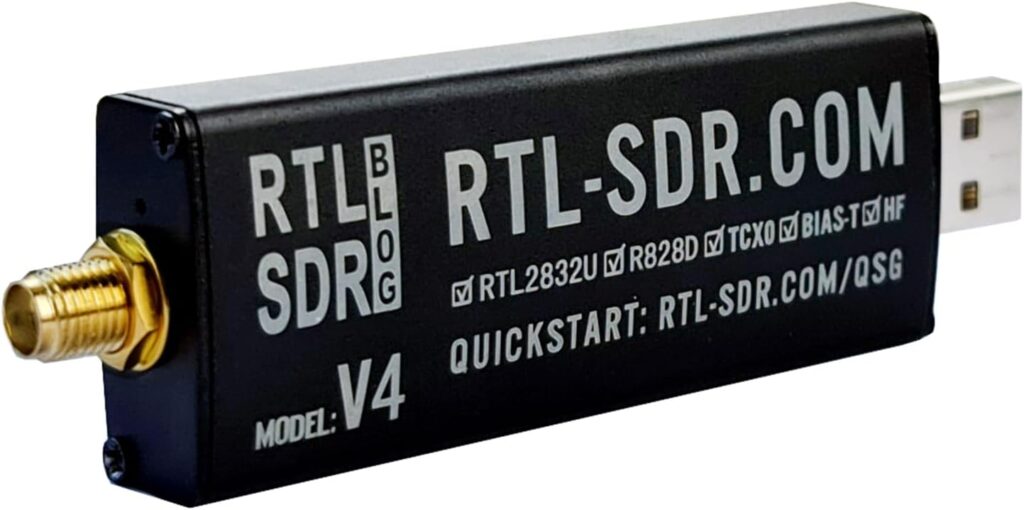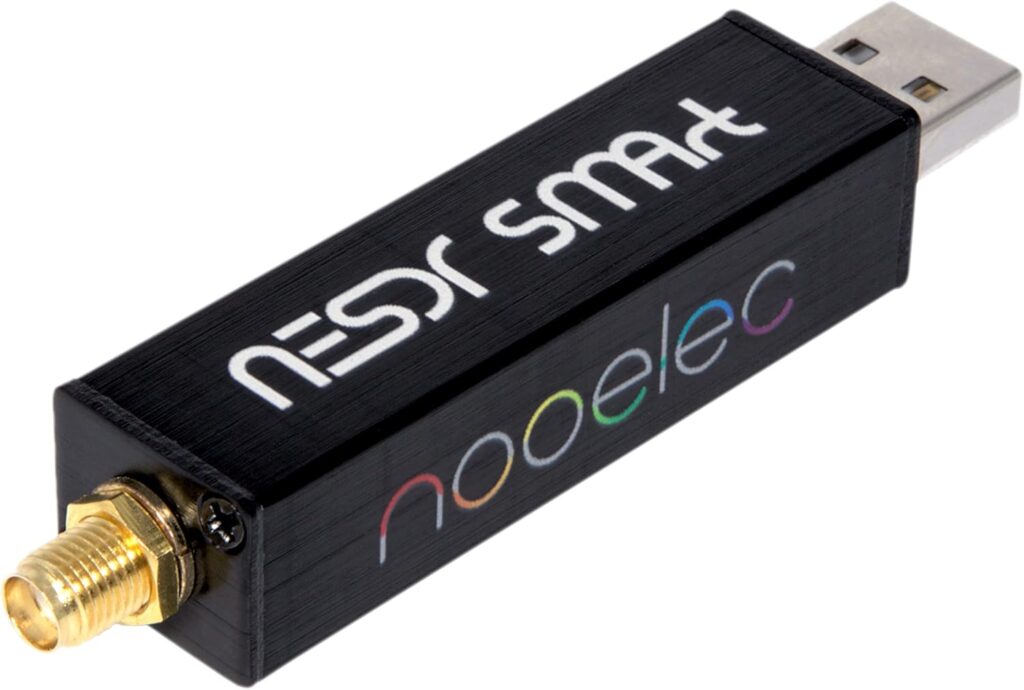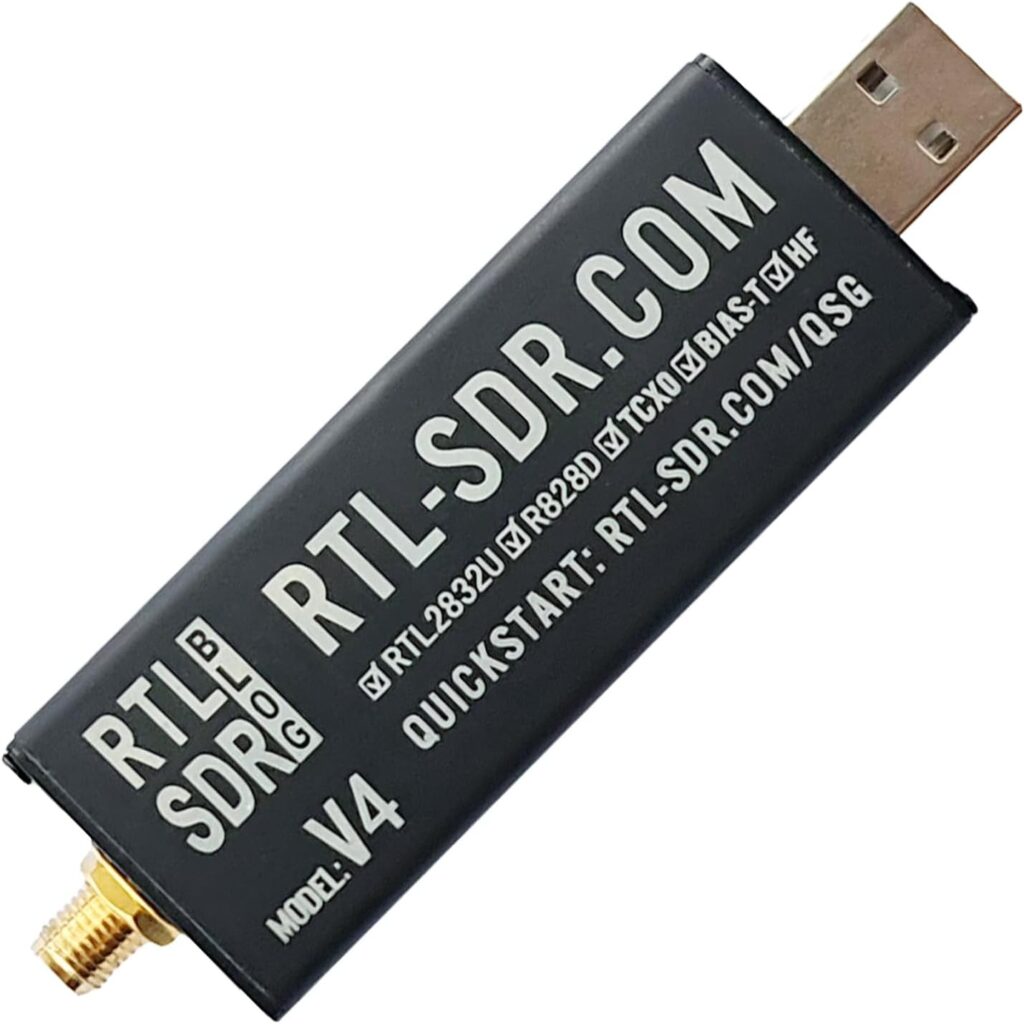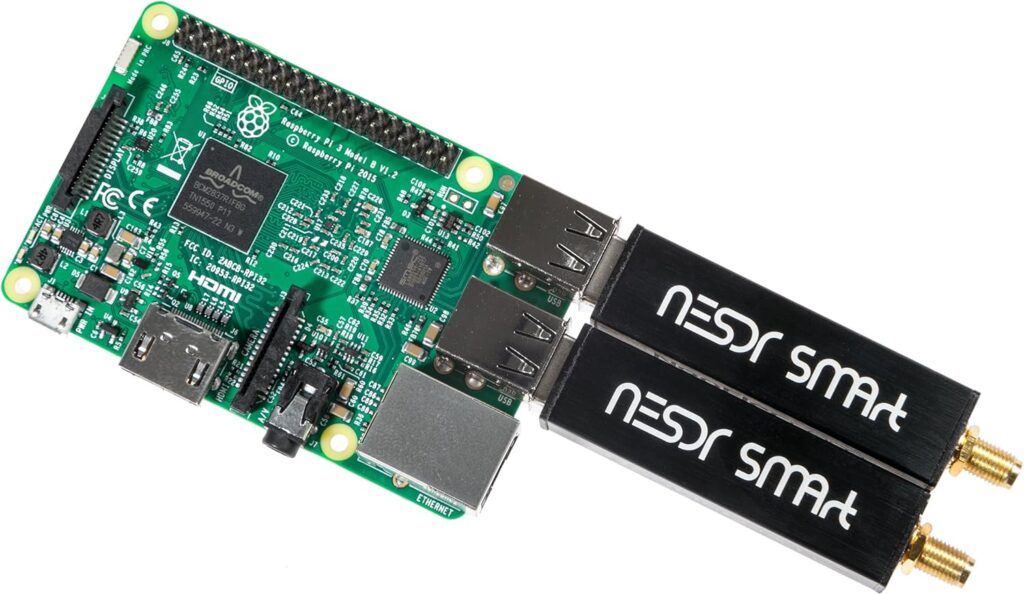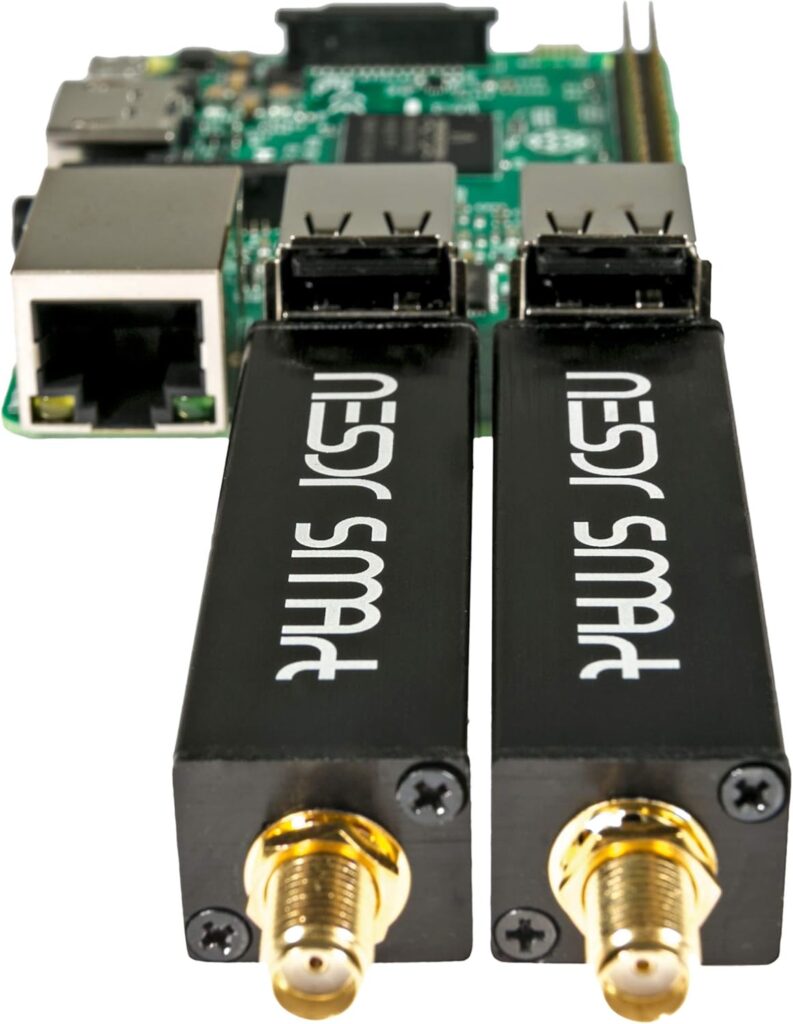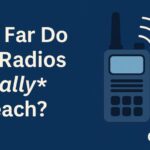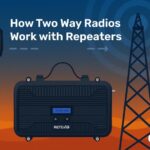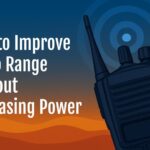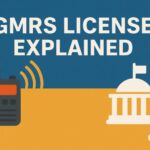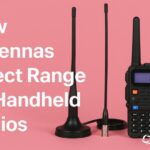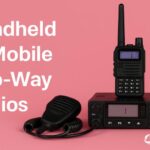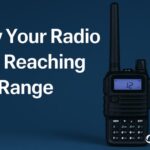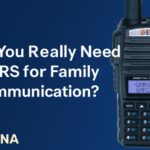Software-defined radios (SDRs) have come a long way in performance, build quality, and frequency coverage. Two of the most popular models today are the Nooelec NESDR SMArt v5 and the RTL-SDR Blog v4. While both are excellent receivers, there are key differences that can influence which is best for your needs.
🏷️ Software-Defined Radio Deals ⭐⭐⭐⭐
🔍 Feature Overview
Nooelec NESDR SMArt v5
- Frequency range: 0.1 MHz – 1.75 GHz with native direct sampling for HF
- Improved signal-to-noise ratio (SNR) over previous models
- About 4× better tuning accuracy than older generations
- Aluminum enclosure with integrated heatsink and SMA connector
- Compact, stackable design for multi-dongle setups
RTL-SDR Blog v4
- Integrated HF up-converter for better low-frequency reception
- Wideband coverage with solid performance across VHF/UHF
- Requires updated drivers for full compatibility
- Build quality improved over older plastic-cased dongles
📊 Side-by-Side Comparison
| Feature | Nooelec RTL-SDR v5 | RTL-SDR v4 (RTL-SDR Blog) |
|---|---|---|
| HF Reception | Direct sampling, 100 kHz – 1.75 GHz | Uses integrated up-converter |
| SNR Improvements | Significant gains on HF and VHF/UHF | Not specifically documented |
| Frequency Accuracy | High precision TCXO | High precision, varies by batch |
| Build Quality | Aluminum case, heatsink, SMA, shielding | Metal case, good shielding |
| Driver Requirements | Works with standard drivers | Requires updated drivers |
| Heat Management | Integrated heatsink | Basic thermal design |
| Size & Portability | Slim and stackable | Slightly bulkier in some variants |
| 💳 Pricing | 💲Check Price | 💲Check Price |
✅ Pros & Cons
Nooelec RTL-SDR v5
Pros
- Native HF reception without extra hardware
- Excellent SNR and tuning stability
- Premium build with good heat dissipation
- Easy to set up for beginners
Cons
- Slightly more expensive than entry-level dongles
- Direct sampling HF performance is good, but some purists prefer an external up-converter
RTL-SDR v4
Pros
- Integrated HF up-converter can improve low-band reception
- Good build quality and wide frequency coverage
- Solid performance for ADS-B, trunking, and general scanning
Cons
- Requires updated drivers to function correctly
- Slightly bulkier form factor
- Heat management less robust than v5
💬 Community Feedback
Hobbyists who own both models generally agree that performance is similar for VHF/UHF work. The Nooelec v5 earns praise for its build quality, ease of setup, and cooler operating temperatures. The RTL-SDR v4 is appreciated for its HF performance with the integrated up-converter, but driver setup can be a hurdle for new users.
Some users note that the v5 can get warm during 24/7 use, but not to the point of impacting performance. Others prefer the v4 for specific HF listening, provided they have the software side set up correctly.
🏆 Recommendation
If you want a plug-and-play SDR with great build quality, wide coverage, and native HF reception, the Nooelec RTL-SDR v5 is the better choice for most users. It’s beginner-friendly, durable, and works well across HF, VHF, and UHF without extra hardware.
If you already have SDR experience, don’t mind updating drivers, and want to squeeze out the best possible HF performance from an integrated up-converter, the RTL-SDR v4 is a strong alternative.
For most hobbyists and especially newcomers, the v5 is the more straightforward and reliable option.
Frequently Asked Questions
What is the main difference between the Nooelec RTL-SDR v5 and RTL-SDR v4?
The RTL-SDR v4 introduced a redesigned signal chain, improved filtering, better front-end performance, and dedicated HF reception via direct sampling. The RTL-SDR v5 builds on the v4 with improved shielding, updated components, enhanced frequency stability, and better overall sensitivity. It is essentially a refined, next-generation upgrade.
Does the RTL-SDR v5 have better sensitivity than the RTL-SDR v4?
Yes. The v5 model typically exhibits lower noise, better filtering, and improved dynamic range, giving it an edge in weak-signal reception. Users often report noticeable improvements when monitoring ADS-B, trunked systems, and HF with proper upconverters or direct sampling modes.
What improvements does the RTL-SDR v5 offer over v4?
The v5 provides enhanced RF shielding, newer surface-mount components, improved thermal stability, cleaner bias-tee implementation, smoother tuning performance, and lower internal noise. It is designed to be more stable and reliable for long-term or high-duty-cycle SDR applications.
Is HF performance better on the v5 than on the v4?
Yes, in most situations. The v5 benefits from improved noise characteristics and cleaner direct-sampling paths. HF users generally experience better clarity and less interference compared to the v4, although both require proper antennas and filtering for best results.
Do both models include a built-in bias-tee?
Yes. Both the v4 and v5 have bias-tee functionality to power active antennas or LNAs. The v5 incorporates a refined bias-tee circuit designed for better reliability and reduced voltage ripple.
Do the v4 and v5 use the same drivers and software?
Yes. Both models are RTL2832U-based SDR receivers and use the same compatible software packages, including SDR#, CubicSDR, GQRX, and Universal Radio Hacker. Installing drivers is the same process for both.
Are the antenna connectors and accessories compatible between v4 and v5?
Yes. Both use the SMA connector and are designed to work with the same Nooelec antenna kits, baluns, and filters. Any SMA-based SDR antenna setup will work with either model without modification.
Which model has better frequency stability?
The RTL-SDR v5 has improved frequency stability thanks to updated components and better shielding. This results in less drift during extended monitoring sessions or temperature changes, which is particularly valuable for digital modes and trunked radio decoding.
Is the RTL-SDR v5 more durable than the v4?
Yes. The v5 includes improved casing materials, better shielding, and more robust PCB construction. It is designed to handle heavier usage and extended runtimes without overheating or RF leakage issues.
Can the RTL-SDR v4 and v5 receive the same frequency ranges?
Yes. Both models cover approximately 500 kHz to 1.7 GHz using standard RTL-SDR techniques. HF performance below 24 MHz relies on direct sampling or external upconverters. The v5 generally performs better across the range due to its refined hardware.
Does the RTL-SDR v5 work better for ADS-B?
Yes. Most users report a stronger ADS-B signal floor and slightly longer aircraft detection ranges. The improved noise floor and filtering give the v5 a measurable advantage for 1090 MHz monitoring.
Which model should beginners buy?
Beginners can use either, but the v5 is the better long-term choice. It offers cleaner reception, fewer noise issues, and improved build quality that makes learning SDR easier and more enjoyable.
Is the RTL-SDR v5 worth upgrading from v4?
Yes, especially if you do ADS-B, trunked systems, HF monitoring, or run long-term SDR setups. The improvements are incremental but meaningful. If your v4 is working well for casual listening, the upgrade is optional but not essential.
Which SDR should I buy: RTL-SDR v4 or v5?
Choose the RTL-SDR v4 if you want the most budget-friendly, modern SDR with strong baseline performance.
Choose the RTL-SDR v5 if you want the newest, most refined Nooelec dongle with better sensitivity, improved shielding, and more stable long-term reception.
